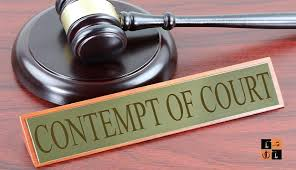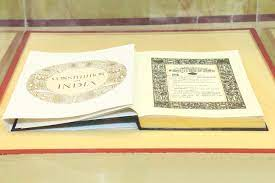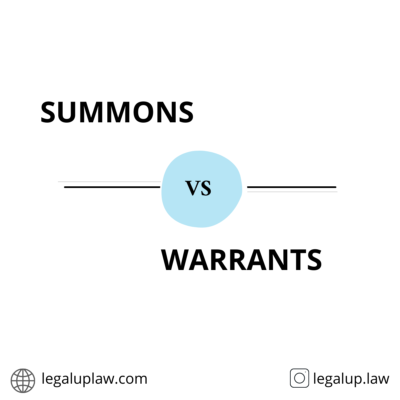After the Independence of the country from colonial rule, we needed our Constitution to run the country smoothly without any hurdles and problems. It took 2 Years, 11 Months, and 18 days to draft our Constitution, and it came into force on 25th January 1950.
Every country has a dynamic nature because of the changing environment, needs, and modernization because of which the laws old laws do not cope with the present situations. So, the provision of the amendment was added under Article- 368 of the constitution under which Parliament is given the power to amend the constitution whenever needed. But there are restrictions to amend the laws So that no authority can misuse its power.
The doctrine of Basic Structure is the weapon to control the power of amendments in the Constitution so, that no authority can amend the constitution in a manner that makes the constitution losses its identity. The doctrine states that there are basic features of the constitution and any amendment done in violation of it would be declared as void. Parliament has the power to amend the laws but it should not disturb the basic features or essentials of the Constitution. This concept was introduced in the case of Keshvananda Bharati vs the State of Kerala, 1973.
Example- Person appoints a contractor to modify or renovate its building, without making any disturbance to the pillars of the building on which it is standing. The same goes with the Constitutional amendments, it can change the laws without disturbing the basic features of the Constitution.

Table of Contents
Amendments in violation to fundamental rights and their related case laws
The first Constitutional amendment act was made in the year 1951, which deals with the rights of property covered under Article- 31 of the Constitution. Earlier in the Constitution, there were 7 fundamental rights available, but for now, there are only 6 fundamental rights, Right to Property has been curtailed by the 44th amendment.
According to the 1st CAA ( Constitutional Amendment Act) Article- 31A and 31B were introduced. It was stated under Article- 31A that the states after making a valid law can acquire the property of the Individual, also the compensation given to the owner of the property will also be decided by the state. Under Article-31B, the 9th Schedule was created under which no law would be challenged for the judicial review, even though it violated the fundamental rights of the citizens. This amendment was contradictory to Article- 13(2), which is covered under Part- III of the Constitution, which states that any law would be declared void to that extent, it violates the fundamental rights of the citizen.
This Constitutional amendment was challenged before the court in the case of Sri Sankari Prasad Singh Deo vs Union Of India. In this case, it was held by the Supreme Court that Parliaments is given the power under Article- 368 to amend the Constitution including Fundamental rights. The Court said that constitutional amendments are not included under Article-13(2) of the Constitution, it says “laws” that are inconsistent with the fundamental rights are declared as void. So, the 1st Constitutional amendment is considered legal.
The second amendment which was challenged before the court was the 17th Constitutional amendment. Under this amendment, the states were allowed to keep their land reform laws in the 9th schedule of the Constitution. 44 statues were added to the schedule, and this was challenged in the case of Sajjan Singh v. the State of Rajasthan where 5 Judge bench was seated. In this case, it was held by Justice C.J Gajendra Gadkar, that during the drafting of the Constitution, if the comity wanted to protect the fundamental rights of the citizens by the amendments then there would probably be any limitation or any express provision given under Article-368 of the Constitution. therefore the 17th Constitutional amendment is not void. But for the 1st time, Justice Hidyatullah and Justice Mudholkar in the same bench made an opposite decision on the same.
Since both the judges were of the opposite view they refer the matter to another bench of 11 judges to review the case. It was decided in the case of Golaknath v. State of Punjab.
In this case, the biggest bench of judges of that time was seated to decide on the same issue, the court held that the power provided under Article-368 of the constitution is not an absolute power whereas it is a limited power, judicial review can be done of the amendments if it violates fundamental rights. Along with that, the court said that Parliament does not have the power to abridge the fundamental rights covered under Part-III of the Constitution, and any Constitutional amendment which is in violation of fundamental rights will also be declared as void. Article-13 would apply to the Constitutional amendments.
It was also stated by the court that only the recent amendments and future amendments can be challenged in the court and not the previous amendments.
In order to restore the powers to amend the Constitution and to reverse the judgment of Golaknath v. the State of Punjab, the Parliament made a new 24th Constitutional amendment act under which Article- 13(4) and under Article- 368(3) was added. According to clause-4 of article-13, it is stated that “nothing in this Article shall apply to any amendment of this Constitution made under Article 368”.
Under Article- 368(3) it was added that any constitutional amendment would not apply to article-13 of the Constitution, and parliament can amend any part of the Constitution including the fundamental rights.
Meanwhile, 25th, 26th, and 29th Constitutional amendments were also made on Property Rights, Privy Purse, and Land Reforms respectively.
This amendment was challenged in the case of Kesanvnda Bharati vs the State of Kerala, 1973 and from there the concept of Basic Doctrine Structure came into existence, under which it is stated that any law or constitutional amendments which violates the basic features or essentials of the Constitution would be declared void. The basic features given in judgment are-
- Supremacy of the Constitution
- Unity and sovereignty of India
- Democratic and republican form of government
- Federal character of the Constitution
- Secular character of the Constitution
- Separation of power
- Individual freedom
Along with it, the court said these features are not exhausted and they will increase with the varying cases.
39th amendments act

Background of the Constitutional amendment-
On 12th, June 1975, the Allahabad High Court made a judgment under which the election of Indira Gandhi was challenged by her rivals, and it was believed by the court that she have used malpractices to win the elections, because of which the court held that Indira Gandhi would not hold any public office for 6 years.
After the Allahabad High Court judgment, Indira Gandhi did 2 things just before the first hearing in the Supreme Court, firstly she enforces National Emergency in the country and, secondly she made the 39th Constitutional amendment under which Article- 329A was added in place of Article- 71 of the Constitution, under which it was stated that the Supreme Court cannot try the electoral dispute of President, Vice- President, Prime Minister, and Speaker of Lok Sabha.
In the next elections, Morarji Desai become the next Prime Minister, and he removed national emergency from the country and also replace Article- 329A back to Article- 71 of the Constitution under which the Supreme Court has the power to try the electoral disputes.
But the fun fact of the case is that the case is still going on in the Supreme Court of India.
Conclusion
Every authority/organ has its own significance in itself, Legislature which is the highest authority to make laws then comes the Executive which helps to enforce these laws, and then comes the Judiciary which is there to review the matter in which laws has been misused or violated. In our Constitution, the provision of checks and balances between them is given. Imagine the situation where if no such provision would be there, every authority will ultimately misuse its power in the wrong way.
So, was the Parliament was doing the same under Article-368 of the Constitution, after the judicial review everything got sorted out, the provision of Basic Structure Doctrine made it possible to let understand the Parliament the rights provided under the article. It states that Parliament can make laws and can amend the existing laws along with fundamental rights covered under Part- III of the Constitution, but with the condition that it does not disturb its basic features.






